

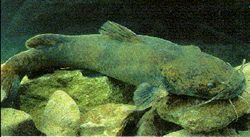
|
Tank 1
|
Tank 2
|
Tank 3
|
Tank 4
|
|
| Dosage of antimycin |
90 parts
perbillion (ppb)
|
30 ppb
|
10 ppb
|
0 ppb
|
| Number of dead fish |
20
|
10
|
2
|
1
|
Wanda and Louise, former BIOL 1114 students, are planning a road trip for spring break. Wanda has agreed to drive her 1982 Honda Civic and pay for gas if Louise provides food for a six day trip taking them through southwest Texas and New Mexico (desert areas) and then into the mountains of Colorado (alpine tundra) before returning to Stillwater. They plan to camp, so Wanda checks out a tent and sleeping bags, ice chest, camp stove, hot/cold beverage containers, etc. from the OSU student recreation department. Louise buys food items including cereal, sandwich makings, chips, pickles, drinks, and freeze dried entrees to make on their gas campstove in the evenings.
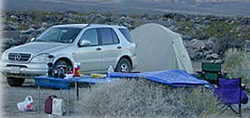
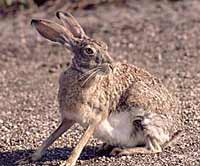
While camping in the desert of southwest Texas, Wanda observes abundant cactus plants, assorted lizards, and jackrabbits. Ambient temperatures reach a maximum of 90° F during the day and a minimum of 35° F during the night while she is there. Wanda observes lizards (poikilotherms) sunning themselves in the mornings as ambient temperatures begin to rise. She does not observe the jackrabbits (homeotherms) doing this. During the heat of the day, both species retreat to the shade.
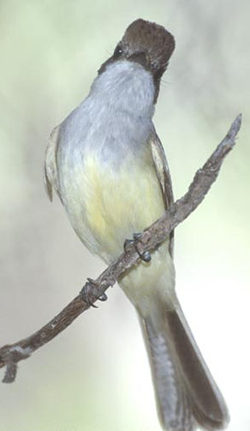
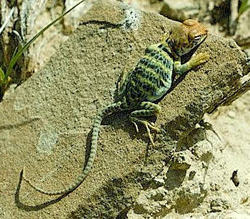
Dusky Flycatchers (a bird) build nests in open areas of sub-alpine (near tundra-like summer conditions) in the southwestern and western U.S. Dr. Pereyra and Dr. Morton investigated how well these birds thermoregulated as they grew from hatchlings to adults. These birds hatch without feathers and remain in the nest while they grow.
Dusky Flycatchers (a bird) build nests in open areas of sub-alpine (near tundra-like summer conditions) in the southwestern and western U.S. Dr. Pereyra and Dr. Morton investigated how well these birds thermoregulated as they grew from hatchlings to adults. These birds hatch without feathers and remain in the nest while they grow. Drs. Pereyra and Morton found that a single, newly-hatched bird had more trouble maintaining its body temperature than did several in the same nest. As dusky flycatchers grow, they are able to thermoregulate better. Drs. Pereyra and Morton measured the chicks’ ability to thermoregulate as the chicks grew and began to produce feathers. They found that the production of feathers over this period of the chicks’ growth was NOT well correlated with their increased ability to thermoregulate. At night, very young (< 5 days old) dusky flycatcher chicks are likely to become hypothermic (their body temperature drops very low) in these sub-alpine nests.